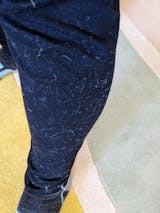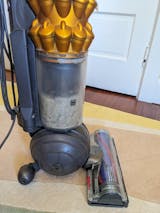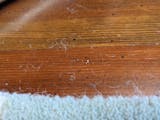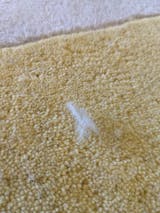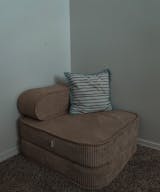The color of the picture is not representative of the actual rug. It appears much more of a sage green online and it has a muddy brown tone to it in person. Not happy with it and the return policy is very short. I wouldn’t purchase from them again knowing this issue.
The rug looked great initially, and the shipment arrived within a week. It was high-pile and soft. However, within a few days, an incredible amount of white fiber dust accumulated on and around the carpet. I tried vacuuming every few days, and each time, the entire dust bin would fill up (starting with a clean barrel). The fiber also clings on clothing as seen in the picture of my black pants.
I bought this carpet specifically for its anti-allergy properties, being a wool carpet. Unfortunately, the amount of fiber dust is unacceptable, and I can no longer use it in the kids' room. This rug should not be advertised as suitable for kids or as anti-allergenic if it produces this much dust.
Hi Lucy,
I'm sorry about the experience you're having with this rug. The rug you purchased in a wool rug and there is a tendency for wool rugs to shed during the initial 2 to 3 weeks of use. This is why we typically do not recommend wool rugs for children under the age of 3. Our in-house consultants would be happy to work with you to select another rug that is more suitable for your household. If this is your preference, please reach out to design@rugsbyroo.com and we'd be happy to make an exception and offer an exchange.
Sandy
We got this rug in 2020 for our nursery. it is SO soft and cute. But over the years no matter how many times we have washed it, vacuumed it, it still endlessly sheds. It has definitely lost of lot of it's "plushness". I was hoping over time the shedding would stop...but 4 years later I think it is time we give up.
Hi Huanyuan,
I'm sorry about the experience you're having with the OHH cotton rug. The OHH cotton rugs are made using an extremely soft high quality cotton. It does have to be treated with care, which means vacuuming on the lowest setting possible without bristles. It also means when washing it in the machine, to use cold water on gentle cycle and also drying it on mild heat on delicate cycle.
Given what you've described and the volume of fibres you're extremely, it sounds like the fibres are being 'pulled' from the base due to either of the above reasons.
What I see would be useful to our customers is to provide more precise care instructions around how to care for our cotton rugs. These rugs are designed to last in your home for more than 10 years, so the care process is an important factor that contributes to its longevity. I will take this feedback and have the team create better content to share with our customers.
Much thanks for your feedback here. Should you need anything else down the road, feel free to reach out to our support team support@rugsbyroo.com
Sandy
Never arrived. Sent to the wrong address. Seller will not respond
Love that this chair is tested for chemicals and it's not toxic for kids, which is important to my family. Also love that the fabric unzips for easy cleaning, love that it can fold down into a little day bed. I would highly recommend this if you want something minimal design and easy to clean!

